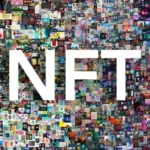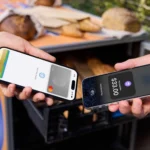The NFT (Non-Fungible Token) market has exploded in popularity, becoming a multi-billion-dollar industry almost overnight. Artists, musicians, developers, and collectors are rushing to stake their claim in this digital gold rush.
If you’re looking to get in on the action, minting your own NFTs is a great place to start. But before you dive in, it’s crucial to understand what minting means, how it works, and what steps are involved. This comprehensive guide breaks it all down.
What is NFT Minting?
NFT minting is the process of creating a new NFT and publishing it on the blockchain. When you mint an NFT, you are essentially turning a digital file (like an image, song, video, or document) into a cryptographic asset that is unique and verifiable. Once minted, the NFT can be owned, sold, or traded on various marketplaces.
Why Mint an NFT?
There are several reasons to mint NFTs:
- Ownership: You establish a verifiable claim to a digital asset.
- Royalties: Smart contracts allow creators to earn royalties every time the NFT is resold.
- Market Reach: NFTs can be sold globally on decentralized platforms.
- Security: Blockchain ensures the asset’s authenticity and prevents counterfeiting.
Prerequisites for Minting an NFT
Before you can mint your first NFT, you need the following:
- Digital Wallet: You’ll need a cryptocurrency wallet that supports NFTs (e.g., MetaMask, Trust Wallet).
- Cryptocurrency: Most platforms require ETH (Ethereum) or other compatible tokens to pay gas fees.
- NFT Marketplace Account: Platforms like OpenSea, Rarible, and Foundation allow users to mint and list NFTs.
- Digital Asset: Prepare the file you want to turn into an NFT.
Step-by-Step Guide to Minting Your Own NFT
Step 1: Choose Your Blockchain
The most popular blockchains for NFTs include:
| Blockchain | Pros | Cons |
|---|---|---|
| Ethereum | Most widely used, large user base | High gas fees |
| Polygon | Low fees, Ethereum-compatible | Smaller user base |
| Solana | Fast and low-cost | Less established for NFTs |
| Tezos | Eco-friendly and cheap | Limited marketplace support |
Choose the one that suits your goals and budget.
Step 2: Set Up a Digital Wallet
Download a wallet like MetaMask or Trust Wallet. Secure your private keys and never share them. Fund your wallet with crypto (e.g., ETH or SOL) to cover minting fees.
Step 3: Pick an NFT Marketplace
Select a platform that supports your chosen blockchain:
- Ethereum: OpenSea, Rarible, Foundation
- Polygon: OpenSea (Polygon version), Zora
- Solana: Magic Eden, Solsea
- Tezos: Hic et Nunc, Objkt
Step 4: Connect Wallet to Marketplace
Go to the marketplace and link your wallet. You may be prompted to sign a message (not a transaction) to verify ownership.
Step 5: Upload Your Digital File
Upload your file to the platform. It could be an image, video, audio, or 3D file. Some platforms support metadata like titles, descriptions, and external links.
Step 6: Customize Your NFT
Configure your NFT with the following options:
- Title and Description
- Royalties (% per resale)
- Supply (Single vs. Multiple editions)
- Unlockable Content (e.g., high-res download, private links)
Step 7: Mint the NFT
Click the “Create” or “Mint” button. This will trigger a blockchain transaction. Confirm it in your wallet and pay any associated gas fees.
Step 8: List Your NFT for Sale (Optional)
After minting, you can list the NFT for sale. Set a fixed price, auction, or open bid depending on the platform.
Tips for a Successful NFT Launch
- High-Quality Assets: Use professional-grade files and visuals.
- Storytelling: Create a compelling backstory or narrative.
- Community Engagement: Promote on Twitter, Discord, Reddit, and other social channels.
- Collaborations: Partner with other artists or influencers.
- Timing: Consider market trends and time zones of your target audience.
Costs Involved in Minting NFTs
| Cost Type | Description |
|---|---|
| Gas Fees | Charged for blockchain transactions (varies by network) |
| Listing Fees | Some platforms charge to list NFTs |
| Commission | Marketplaces take a cut from sales (typically 2.5% to 15%) |
Legal Considerations
- Copyright: Ensure you own the rights to the content.
- Licensing: Be clear about what rights the buyer is getting.
- Taxes: NFT sales may be subject to capital gains or income tax.
- Terms of Use: Understand the rules of each marketplace.
Advanced Topics
Lazy Minting
Some platforms like OpenSea allow you to mint NFTs without paying gas fees upfront. The buyer covers the fee when the NFT is purchased. This is ideal for creators testing the waters.
Smart Contracts
Advanced users can deploy their own smart contracts for full control over minting logic, royalties, and interactivity.
Cross-Chain NFTs
Cross-chain solutions allow your NFTs to move across blockchains, enhancing liquidity and audience reach.
Fractional NFTs
Fractionalization lets you divide an NFT into smaller shares, allowing multiple people to invest in a single asset.
Common Mistakes to Avoid
- Ignoring Wallet Security: Use hardware wallets and two-factor authentication.
- Overpricing: Price based on demand and market trends.
- Lack of Promotion: Minting alone isn’t enough—marketing is key.
- No Clear Utility: NFTs with added value (e.g., membership access, perks) perform better.
ALSO READ: How to Choose the Right Cryptocurrency for Investment?
Conclusion
Minting your own NFT is more accessible than ever, but success requires more than just uploading a file and clicking “mint.” From choosing the right blockchain and marketplace to setting a smart pricing strategy and building a loyal community, every step matters.
By understanding the process, avoiding common mistakes, and leveraging smart promotion strategies, you can tap into the full potential of NFTs as a creator, collector, or entrepreneur.
NFTs are not just a trend—they’re part of a digital revolution. Whether you’re an artist, musician, or simply curious, learning to mint your own NFTs puts you at the forefront of this exciting frontier.







